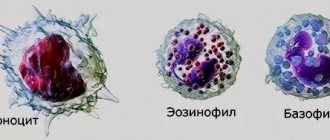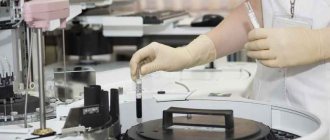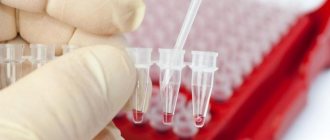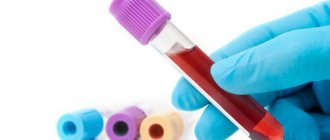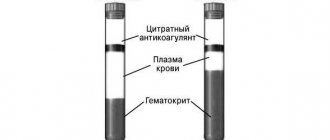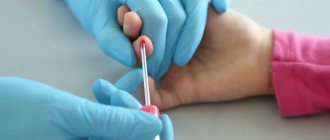In the modern world, people strive to plan their entire lives, including the birth of children, approaching this important stage for the family with special care. The gender of the future baby is very important for most parents, so today there are many theories about how to calculate the gender of the baby in advance in order to give birth to the desired child.
In this article, you will learn how many years it takes for men and women to renew their blood in order to correctly calculate the birth of a baby of a certain gender, and you will also learn other ways to determine or conceive a child of the required gender.
What is blood renewal and how does it happen?
The theory of blood renewal in adult men and women has gained very wide popularity among couples who want to give birth to a baby of a certain gender.
According to this theory, blood renewal in men and women occurs slightly differently and takes different time intervals, but is cyclical. Proponents of this statement advise future parents who want to plan the sex of their child in advance to choose certain periods for conceiving.
However, this special method of determining the sex of the unborn baby before conception has not received scientific confirmation. But this does not prevent couples from conducting their own experiments in this area.
According to the theory, the sex of the unborn child can be determined by the blood renewal system of the parents. In earlier times, it was believed that the blood of all people is completely renewed every 7 years, but later it was found that in men this process takes 4 years, and in women – only 3 years. The composition of the blood fluid of adults remains practically unchanged, but its structure is constantly changing during this period, as a result of which by the end of the established period the blood cells are completely rejuvenated.
At the moment of conception, the age of the blood of both parents plays a significant role , with the one whose age is younger being dominant. Young biofluid is much stronger, and it is this parameter that determines the sex of the unborn baby. If the blood of a woman is younger, then a girl will be born, if the blood of a man is a boy.
There are 2 exceptions to the rule of determining sex by parental blood:
- If a woman has a negative Rh factor, then the sex of the baby will depend not on the youngest blood, but, on the contrary, on the older one.
- If one of the partners has suffered serious blood losses, operations followed by transfusions and other similar situations, then the renewal cycle is disrupted. In this case, the countdown of renewal must be counted not from the moment of a person’s birth, but from the time when such an unpleasant event occurred.
What diet should you follow to conceive a boy?
Some studies have found a connection between nutrition and the gender of children born. Expectant mothers and fathers who want to give birth to a son are advised to eat foods rich in sodium and potassium - meat, sausages, fish (but not other seafood), potatoes, peas, lentils, beans, mushrooms, cherries, bananas, apricots, oranges, peaches, dates, egg whites, rice, semolina, cookies, dark chocolate. In this case, it is better to give up milk, bread, mineral water with calcium, nuts, greens, green beans, cabbage and salt food more than usual.
Blood renewal in women
The process of blood renewal in the body of an adult woman occurs regularly, while its old cells are destroyed and removed from the body, and new cells take their place. In medicine, this process is called hematopoiesis, and its normal course always depends on the condition of the bone marrow.
In fact, these processes in the body have not yet been fully studied, but scientists have calculated that complete renewal of all blood cells in a woman’s body occurs in 3 years, despite the fact that each type of cell has its own lifespan.
But for women, this period often shifts. For example, after childbirth naturally or surgically, after an abortion or miscarriage, after surgery and other situations accompanied by significant blood loss, renewal processes begin all over again, as well as after a blood transfusion or donation.
In fact, any bleeding, including menstrual bleeding, can restart this process in a woman if the volume of blood lost is very significant.
What other methods are there to conceive a boy?
They say the following tips may work:
- quit smoking;
- try not to reduce your weight below 55 kilograms;
- give in to your husband - he must be the de facto head of the family;
- don’t worry if you can’t get pregnant for a long time - the longer you don’t succeed, the higher the likelihood that you will have a boy;
- lead a calm, measured lifestyle, avoid stress;
- visualize your future son in every detail.
And finally, a few folk methods to conceive a boy. It’s good if conception occurs in the summer, but it is important that the future father walks the earth barefoot, renewing and strengthening his masculine energy. It is believed that the best time to conceive a son is the morning or afternoon of Monday, Tuesday, Thursday or Saturday.
The renewal process in men
In adult men, the process of complete blood renewal takes 4 years, gaining full strength at the beginning of each new cycle. The optimal age for a man to conceive a healthy and strong child (regardless of his gender) is 24 and 28 years old, as well as 32 years old. Children conceived during these years are particularly resilient and have very strong immunity.
Of course, the blood renewal cycle can also be disrupted in men , for example, when receiving serious injuries or undergoing operations with significant blood loss. In this case, the next update cycle must be counted from the moment the event occurred. The cycle will also be disrupted when donating donor blood.
Process characteristics
In international medicine, blood renewal is called “hematopoiesis.” Its course is 80% dependent on the proper functioning of the bone marrow.
The process of updating the biomaterial has not yet been fully studied; scientists around the world are trying to study its features, so a reliable and correct table of hematopoiesis has not yet been developed.
A biomaterial consists of several types of cells with different functions. Main types of replaceable cells:
- Red blood cells. They contain the most common type of cells - hemoglobin and iron. Red blood cells enter the blood from the bone marrow and are responsible for supplying and oxygenating other tissues. Doctors have discovered that the lifespan of red blood cells is 4 months, after which the red blood cells begin to die in the liver and spleen.
- Leukocytes. The main task of these cells is to protect the body from various viruses and pathogens. They prevent infections, and when harmful compounds enter, they detect and destroy them. There are several types of leukocytes: eosinophils (protect the digestive tract and respiratory system), neutrophils (their activity affects the functioning of the immune system), monocytes (fight the inflammatory process), basophils (prevent the development of the allergic process). ).
- Platelets. Responsible for restoring and strengthening the walls of blood vessels, activates the coagulation process after cuts and injuries, and prevents blood loss. Unlike other cells, platelets live for 8 to 12 days and then die. New ones are being built in their place.
How to speed up the natural replacement process?
If you don’t want to wait for natural blood renewal to conceive a healthy child, this process can be accelerated artificially. The simplest and most effective method of speeding up in this case is donating blood.
To start a new renewal cycle, it is recommended to donate blood once a month at intervals of 4 weeks for 2 to 3 months.
Plasmophoresis also gives good results, but in this case, to speed up the process it is necessary to undergo a full treatment course.
You should not try to replace blood by transfusion , since this method of stimulating renewal has very little effectiveness, but can lead to side effects and complications.
Further in the article you will learn how to determine the sex of a child by blood renewal in adults, and other methods for determining the sex of the unborn baby.
Contraindications
— What diseases prevent people from becoming blood donors?
— People from 18 years of age to any age can donate blood if there are no contraindications in the form of serious illnesses, somatic diseases, hepatitis, infectious diseases, or vegetative-vascular dystonia. Temporary contraindications are allergic diseases in the acute stage, pregnancy, menstruation, and taking antibiotics.
Sometimes the peculiarity of the structure of the veins can become an obstacle, because donation means donating blood in a fairly large volume and the veins must be pronounced. If there are no these contraindications, then a person can be a donor even at 70 years old. We even have several donors who have crossed the 70-year mark, mostly career plasma donors who have been donating for a very long time. Partly due to their active donor position, they maintain health and vitality.
Photo: AiF / Lyudmila Alekseeva
Calculate the sex of a child based on blood renewal?
You can determine the sex of the future baby even before conception using a special table that indicates the ages of the mother and father. In order to find out who will be born at conception at a certain age, you need to find the intersection cell of certain indicators in the table. Determining the sex of a child by blood renewal coincides with reality in 98% of cases.
Table for calculating the sex of a child based on blood renewal in a woman and a man:
For example, if the mother is 22 years old at the time of conception, and the father is 25, then they will have a boy. And if both parents are 22 years old at the time of conception, a girl will be born.
Scope of application of plasmapheresis
Plasmapheresis provides detoxification, hemorheological, coagulation and immunocorrective effects and is therefore widely used by specialists at the Medixity clinic for the treatment of diseases of various profiles.
We use plasmapheresis in the treatment of the following diseases: In obstetrics and gynecology:
- with gestosis of pregnancy;
- with ovarian hyperstimulation syndrome;
- in the complex treatment of genital infections;
- in the complex treatment of chronic recurrent salpingo-oophoritis;
- in the complex treatment of chronic diseases of the uterus and appendages;
- with menopausal syndrome;
- with premenstrual syndrome;
- with chronic miscarriage;
- in the treatment of cholestatic hepatosis in pregnant women;
- in preparation for IVF, etc.
In urology:
- in the treatment of urinary tract and kidney infections;
In surgery:
- in the complex treatment of diseases of the hepatobiliary system: ( cholecystitis, pancreatitis);
- for preparation for surgical interventions and in the postoperative period;
- for angiopathy of various origins, etc.
In cardiology and vascular surgery:
- with viral myocarditis;
- with angina pectoris;
- for post-infarction syndromes;
- in the treatment of carditis in connective tissue diseases;
- for cardiomyopathy in autoimmune diseases and autoimmune crises;
- with systemic atherosclerosis;
- with coronary heart disease;
- with dyslipidemia;
- in the complex treatment of hypertension;
- for vascular diseases of the lower extremities (obliterating endarteritis, thromboangiitis), etc.
In endocrinology:
- with metabolic syndrome;
- for diabetes mellitus and its complications (retinopathy, nephropathy, polyneuropathy);
- with sensitization to insulin;
- with autoimmune thyroiditis;
- with Addison's disease;
In gastroenterology:
- with Crohn's disease;
- for nonspecific ulcerative colitis;
- in the treatment of hepatitis;
- with fatty hepatosis, etc.
In nephrology:
- in the complex treatment of chronic kidney diseases;
- in the complex treatment of lupus nephritis;
- in the complex treatment of Henoch-Schönlein disease – generalized productive vasculitis;
- with hemorrhagic vasculitis;
- with Goodpasture's syndrome;
- with paraproteinemia;
- with hemolytic-uremic syndrome.
In dermatocosmetology:
- for dermatitis and dermatoses;
- for psoriasis;
- with porphyria cutanea tarda;
- in the treatment of angiitis;
- in the treatment of rosacea;
- with Lyell's syndrome;
- with pemphigus (pemphigus);
- for acne;
- with herpes;
- with toxicoderma;
- for fungal infections, etc.
In rheumatology:
- with systemic lupus erythematosus;
- for rheumatoid arthritis;
- with systemic scleroderma;
- for allergic vasculitis;
- with hemorrhagic vasculitis;
- with periarteritis nodosa;
- with dermatomyositis, etc.
In ophthalmology:
- for endocrine ophthalmopathies;
- for uveitis;
- with pseudotumor (chronic nonspecific inflammation of the orbit);
- for diabetic retinopathy;
In allergology:
- for hay fever;
- with atopic dermatitis;
- for urticaria;
- in the presence of physical allergies (to heat, cold, sunlight);
- during a hypersensitization reaction, etc.
In pulmonology:
- with fibrosing alveolitis;
- for bronchial asthma;
- in the complex treatment of chronic diseases of the lungs and bronchi;
In neurology:
- with multiple sclerosis;
- with myasthenia;
- allergic encephalitis
- dimyelinating diseases of the central nervous system
- slow-acting viral infections of the central nervous system
- multiple sclerosis
- myasthenia gravis
- with hepatocerebral dystrophy.
In narcology:
- in the treatment of metabolic syndrome, etc.
In the treatment of viral diseases:
- cytomegalovirus;
- hepatitis;
- skin viral diseases;
- for intoxication after severe viral infections, etc.
In modern medicine, plasmapheresis is increasingly strengthening its position. It is effective in treating more than 300 different diseases. The range of applications is very wide - from alcohol and drug addiction, severe chronic diseases to anti-aging cosmetology. Whatever happens, do not despair! Thanks to a comprehensive modern approach, our clinic will help you.
Calculating the sex of a child by the age of the mother and father
According to the theory of determining the sex of a baby by the renewal of the blood of its parents, the child at the moment of conception inherits the sex of the parent whose blood is younger and stronger during this period. In addition to the fact that the floor can be viewed in the table, you can calculate it yourself.
To do this, the total number of years of a man must be divided by 4, and that of a woman by 3. After this, the results obtained must be compared. Whose number is lower will be inherited by the future child.
For example, if a woman is 22 years old at the time of conception, and the man is 27 years old. In this case, 22 should be divided by 3, resulting in 7.3. Next, 27 needs to be divided by 4, resulting in a value of 6.75. When determining the sex of the baby, you should take into account the remainder of the integers obtained in the calculations, with the smallest number being dominant. Since 7.3 is greater than 6.75, the couple will have a girl.
The calculations are quite simple. However, here the majority of future parents have the same question - what gender will the child have if, when dividing the years of the parents, the result is equal?
For example, if the expectant mother is 21 years old at the time of conception, and the father is 28, then when dividing these numbers by the corresponding values in both cases, the result is 7. In such a situation, a couple may have twins, and there is a high chance that the children will be of different sexes .
What does science say about conceiving a boy?
To understand how to properly conceive a boy, you need to know the principle of gender formation during egg fertilization. A new person receives half his DNA from his father and half from his mother. Moreover, as is known, women are carriers of the XX chromosome set, and men are carriers of XY. The future sex of the child depends on which father's chromosome is transferred by the sperm that fertilizes the egg. If the sperm carries the Y chromosome, a boy will be born[1].
Pregnancy with your son is the result of many factors coming together, so try not to put too much faith in advice on how to conceive a boy. Today, only the IVF procedure can accurately guarantee the birth of a child of the desired sex, but the selection of an embryo by sex in Russia is carried out only according to indications - in order to exclude any hereditary disease transmitted through the female or male line[2].
If the future parents had significant blood loss
In this case, the general cycle of blood renewal is shifted. Every serious blood loss leads to the fact that the body is forced to restore losses in an emergency mode, throwing all its hidden resources at it. In such situations, blood cells of all categories begin to be produced in large quantities, resulting in unscheduled renewal.
For this reason, when determining the sex of a child by blood renewal, it is important to take into account all such points. In this case, it is necessary to count from the date of the event, as a result of which significant blood loss occurred.
Exceptions in theory
For women with a negative Rh factor, the principle of operation of the theory changes exactly the opposite. In this case, the sex of the child is determined by the parent whose blood is “older” (whose remainder after dividing age by the decimal update rate will be greater). There is an opinion that this exception applies in the case of a negative Rh factor in a man, but it has not been confirmed.
When the body loses a significant amount of fluid, the timing of its renewal changes. In cases of heavy blood loss, the starting point of the renewal cycle will change - it will begin not from the date of birth, but from the moment of this event. Such cases include:
- surgery;
- donation;
- childbirth (bleeding after childbirth);
- abortion;
- miscarriage;
- injuries.
If the Rh factor is negative
If a woman has a negative Rh factor, then in this case the calculations change somewhat, since older blood will be dominant in such a situation. It is she who will determine the gender of the unborn baby.
Considering the above example of calculations for negative Rh blood, we can conclude that the couple will have a boy, since the remainder 75 is greater than 3. With negative Rh, the sex of the baby is determined by the largest remainder of the values obtained in the calculations.
Some experts claim that the Rh blood of not only women, but also men is important. And if the father of the unborn child is Rh negative, then the calculations also change and the oldest blood at the time of conception becomes dominant. But there is no scientific confirmation of this.
How to conceive a boy by ovulation?
There is a calendar method, which is based on the scientific fact that Y-sperm are less tenacious, but more active than X-sperm. According to this method, the ideal time to conceive a son is the day of ovulation and the day preceding it.
A woman thinking about how to conceive a boy will need an ovulation chart. To do this, you can measure basal temperature every day, use pharmacy ovulation tests, or monitor follicles using ultrasound. You can also navigate by the discharge, which becomes more viscous and white during ovulation.
It is worth noting that the studies that discovered the increased activity and shorter lifespan of Y-sperm were carried out in vitro (“in vitro”), and are now being questioned by some scientists[3], so do not expect a 100% guaranteed result.
List of useful products
Many experts advise future parents to improve the quality of their blood before a planned conception, for which they should follow a certain diet, giving up junk and heavy foods and enriching their diet with healthy foods, in particular, you should add to the daily menu:
- Fresh beets and carrots , eating them raw or in juice form.
- Fresh garlic . Doctors recommend swallowing a clove of garlic every day before going to bed. In this case, all processes of hematopoiesis are significantly accelerated in the body.
- Fish of marine varieties , since almost any of them contains omega-3 fatty acids, which contribute to the qualitative improvement of the blood, its purification and the removal of cholesterol from it.
- White cabbage . It should be consumed fresh, without subjecting it to any heat treatment, as in this case it loses all valuable substances. It is best consumed as part of fresh vegetable salads.
- Fresh apples of different varieties , best of all those that grew on your own plot, since they will not contain any chemicals, which cannot be said with certainty about a store-bought product. When choosing apples in a store, you should give preference to the most inconspicuous fruits that have a natural color and appearance.
- Pomegranate seeds , as they also contain a huge amount of vitamins, many of which are necessary to improve hematopoietic processes.
- A variety of nuts , especially walnuts and hazelnuts. Nuts contain a significant amount of potassium, magnesium and iron, as well as many vitamins and therefore can influence renewal processes.
